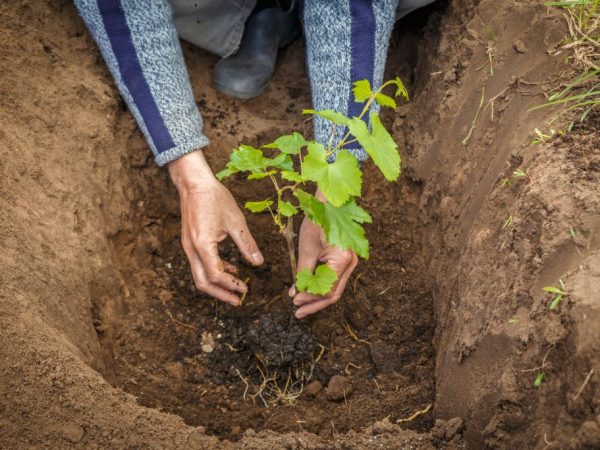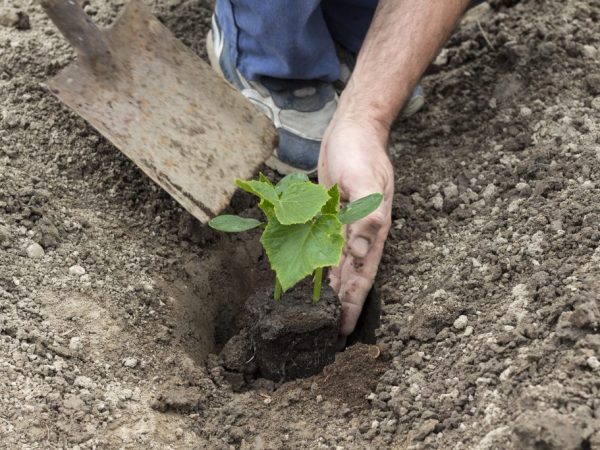Rules for transplanting grapes in summer and autumn
Transplanting grapes to a new place is a laborious process, it is important not to damage the roots and vine. In order for the plant to take root well in a new place, it is important to follow the rules of sanding.

Rules for transplanting grapes in summer and autumn
Transplanting grapes in autumn
Transplanting grapes in the fall is the best option for an immature plant, as both decorative and wild varieties are transplanted.
The root system of this plant goes up to 1.5 m deep, so the autumn transplant is done carefully. Benefits of replanting young grapes at this time of year:
- wet soil;
- simple watering process;
- it is easy to find the necessary varieties due to the fact that the digging of fresh seedlings is completed.
In the southern area, the soil does not yet freeze to the depth at which the roots are located. If you transplant a young, not strong plant in the spring, in the summer it risks dying from the heat. This will not happen with an autumn disembarkation.
Preparing a bush for transplanting
First, the necessary material and tools are collected (shovel, pruner, fertilizer, clay). Save roots, underground bole and heels. Then use a pruning shears to remove the branches 20 cm above the soil. Leave the short ones, cut the long ones. Next, they dig in near the base of the plant. Pry off with a shovel and remove.
They are placed in a mixture of clay and manure. To prepare it, take 2 shovels of manure and 1 shovel of clay, mixing everything with water. The roots are left in this fertilizer for 5-10 minutes and planted in a previously prepared hole. The easiest way is to move an annual and biennial plant, because its root is not yet strongly developed.
Preparing the pit for transplant
To transplant the grapes to a new place, they begin to prepare the pit at least a month in advance. The soil in it should settle well so that the roots do not sink too deep. The better the soil is prepared, the better the plant will take root.
For the best result, follow these recommendations:
- Each seedling is planted at a distance of at least 2 m from each other. The size of the pit is 50x50 cm, the depth is not less than 0.5 m.
- A nutrient mixture mixed with the ground is added to the bottom of the pit. The shoots are cut on the plant to ensure the balance of the underground and above-ground parts of it.
- If the root is well developed, leave 3 sleeves with replacement knots and shoots. In order for the stalk to lie deeper, dew processes are removed.
Superphosphate, ash, potassium salt, ammonium sulfate are used. Fertilizers are well mixed with the ground before application. Then it is not necessary to feed him in the spring.
Planting grape root
The vine is placed in a hole and held, covered with earth to the root. The pit is compacted and watered abundantly. When the water is absorbed, the soil is poured and watered again. The plant should be covered with earth so that the shoots with 4 buds are visible. After transplanting grapes, it is recommended:
- water the plant once a week so that the water reaches the heel root;
- sprinkle the place around the trunk with barley seeds;
- in the first year after planting, remove all inflorescences, in the second - the third part.
Transplanting a young bush

The transplant method depends on the age of the plant.
The choice of method also depends on the age of the plant. A seedling, which is 1-3 years old, is planted in a large pit. To keep the roots together better, stop watering 2-3 days before. When disembarking at the old place, the ground in the pit must be renewed. A plant transplant with a lump of earth is carried out in a certain sequence:
- cut off, leaving 2 sleeves;
- at least two shoots should remain on one sleeve;
- the plant is dug in, leaving the lower roots;
- planted in a hole 10 cm deeper than the previous one;
- fall asleep, pour 10 liters of water.
Transplanting an adult bush
A transplant to another place of an adult bush with bare roots is carried out as follows:
- cut off, leaving 3-4 sleeves;
- only 2 shoots with 3 buds are left on the sleeves;
- digging in, it is important not to touch the spine;
- the processes that are below are removed;
- the plant is planted 20 cm deeper than the previous pit;
- sprinkle with earth and watered abundantly.
If you follow all the recommendations, then it is not difficult to transplant an adult three-year-old seedling to another place. Already after a short time, it will fully recover, and will begin to bear fruit in 2 years.
You can transplant grapes on which there is no clod of earth. To do this, cut off the damaged processes and those that grow deeper than 20 cm, leave 2 sleeves and 2 shoots on the sleeves. Sections are smeared with a mixture of manure and clay. At the bottom of the pit, a small hill of earth is poured and the bush is placed so that the plant completely encloses it. Then they fall asleep, compact and watered with 2 buckets of water. It is advisable to mulch the soil with leaves.
An autumn transplant usually ends with the transplanted grapes being covered in winter. During the first years after planting, the inflorescences of the bushes transplanted in the fall are cut off without touching the vine.
Transplanting grapes in summer
Transplanting grapes to another location in May or summer is not easy. Better to replant in August or September. First of all, choose the right place. It is also not advisable to transplant bushes that are more than 6 years old. Due to the fact that the cutting of such a plant is highly developed, it will be difficult to do this and the plant will not take root in a new place.
There are two options for spring and summer transplant.
Option one

It is important not to damage the roots during transplantation.
You will need:
- metal sheet, up to 50 cm wide;
- wire;
- two shovels.
When transplanting grapes, the leaf is rolled into a large cylinder and secured with wire. The top layer of earth around the bush is carefully removed with a shovel and a metal flask is installed on the bush. It is important not to damage the excavated roots.
To transplant an adult grape bush, a trench is made around the installed flask. As it sinks into the ground, the cylinder will lower. During hot weather, the plant is watered before transplanting.
When the soil around the cylinder is dug, gently lift the plant. Two shovels are installed on opposite sides to create a kind of handrails. If you press on them, the flask rises up with the root. Then they put it in a place prepared in advance. Using this method, even a 5-6 year old plant can be easily transplanted.
Option two
You will need:
- shovel;
- clay;
- fertilizer;
- potassium permanganate.
First you need to prepare a hole in which the plant will be transplanted. Fertilizer and 6-7 kg of humus are placed at the bottom.
A bush for a summer transplant is dug in a radius of 45 cm. The depth is about 0.5 m. If the plant is adult and the roots have gone deep inside, the strongest are dug. The remnants of the earth are carefully crushed from the root. If you need to transplant young grapes to another place, they dig it out with soil. This is done so as not to damage the roots.
If the new planting site is in another garden, the cutting is placed in clay with potassium permanganate. Before disembarking, it is cut off, leaving 3 sleeves.After being placed in a pit, the seedling is well straightened and covered with sleep. After transplanting, the plant is watered abundantly.
Transplanted plant care
Transplanted grapes need proper care. Abundant watering and feeding is required. Before planting, a little rubble is placed on the bottom of the pit and a small pipe, about 10 cm in diameter, is dug in together with the bush. Through it, water will flow directly to the root during irrigation, and fertilizers are also applied through it.
The soil around the transplanted bushes is covered with mulch. This retains moisture and prevents crusting.
Transplanted grapes are not pruned in the fall.
Conclusion
It is better to replant mature grapes in the fall, so it will take root faster and the recovery time will be minimal. If it becomes necessary to transplant it in the summer or spring, it is important to follow the instructions correctly.
Correct adherence to technology will help the bush to take root in a new place. It will begin to bear fruit in a short time and the amount of the crop will increase.


